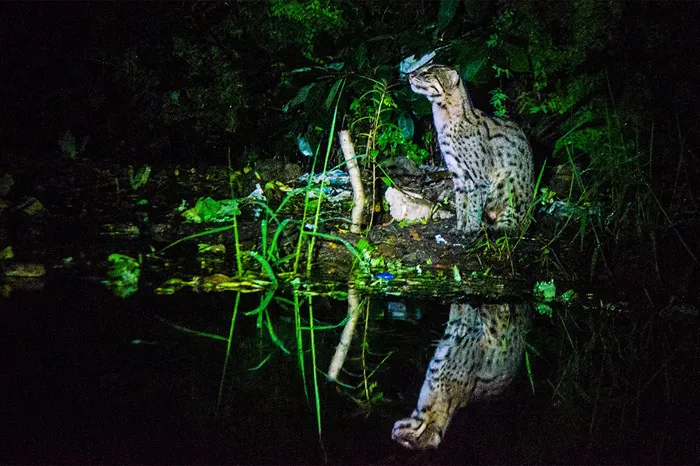Fishing cats, a unique felid species known for their aquatic skills and distinctive quack-like calls, are facing increasing threats across their Asian habitats. Spread from Pakistan to Cambodia and beyond, these medium-sized cats are adept at navigating the wetlands, but they are now vulnerable due to a range of human-induced pressures.
Renowned for their double-layered coats that provide insulation and a waterproof barrier, and partially webbed feet that aid in swimming, fishing cats are built for a life often submerged in water. Despite these adaptations, the species, scientifically known as Prionailurus viverrinus, grapples with habitat loss from agricultural expansion, urban development, and the effects of climate change which disrupts their aquatic environments.
The species’ struggle for survival has not gone unnoticed. Tiasa Adhya, co-founder of the Fishing Cat Project in India, has been a prominent figure in turning the tide for these cats. Since launching the project in 2010, Adhya’s efforts have helped elevate the fishing cat’s profile not just as a unique species but as a vital indicator of wetland health. Her work earned her the Future for Nature Award in 2022, recognizing her contributions to conservation.
The conservation network for these cats has seen significant growth, spearheaded by the Fishing Cat Conservation Alliance (FCCA). This alliance supports projects across several countries, fostering collaboration and sharing crucial resources and knowledge. Efforts range from setting up camera traps in Cambodia, where the species was once thought extinct, to mitigating roadkill incidents in Sri Lanka’s capital, Colombo.
The challenges are immense, especially outside protected areas where fishing cats face dangers from road kills, disease, and direct conflicts with humans. Nevertheless, these cats demonstrate remarkable adaptability, inhabiting even degraded landscapes to some extent. This adaptability brings hope but also caution, as living near humans can be a double-edged sword, exposing the cats to new risks.
Conservationists are keen on ensuring the survival of fishing cats by protecting the interconnected wetland ecosystems. These efforts are crucial not only for the species but for combating broader environmental challenges like climate change. Wetlands are critical for carbon sequestration and act as natural flood defenses, making their conservation beneficial for biodiversity and human populations alike.
The plight of the fishing cat is increasingly capturing the global conservation community’s attention, thanks to the dedicated work of individuals and groups within the FCCA. Through local and international collaboration, there is a concerted effort to ensure that these wetland ambassadors continue to thrive in their natural habitats, signaling a healthier future for the ecosystems they inhabit.



























